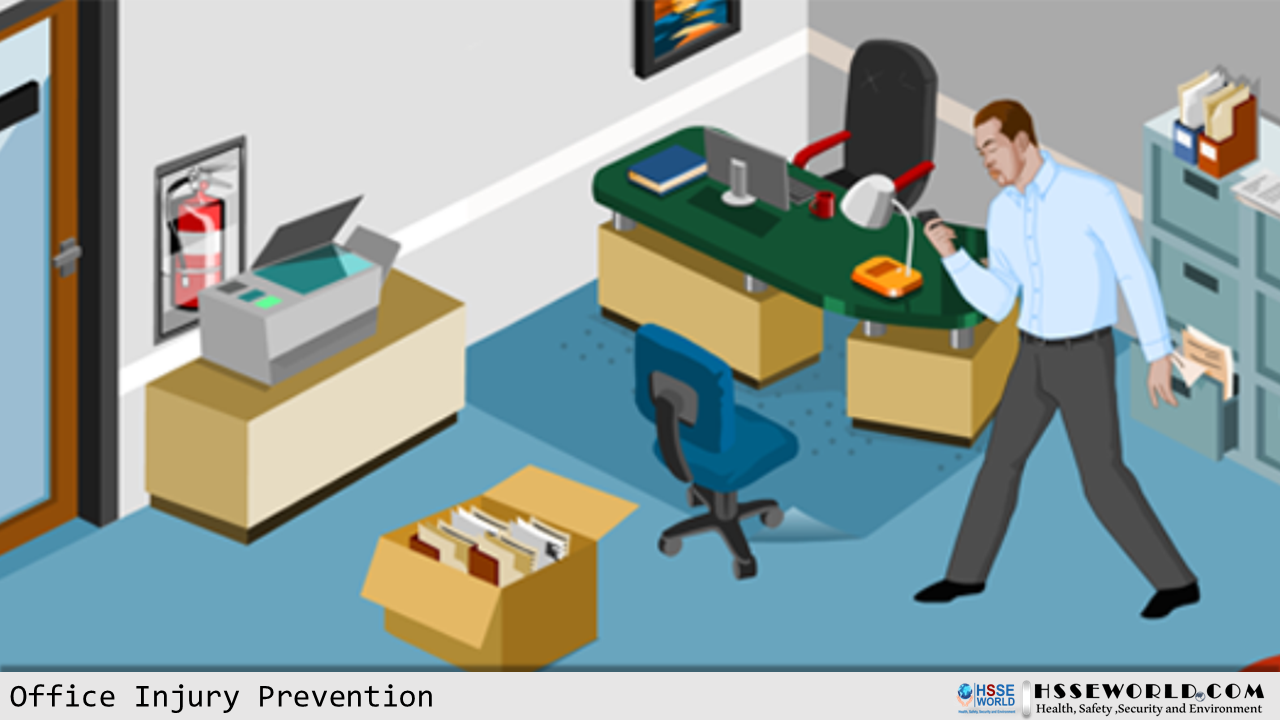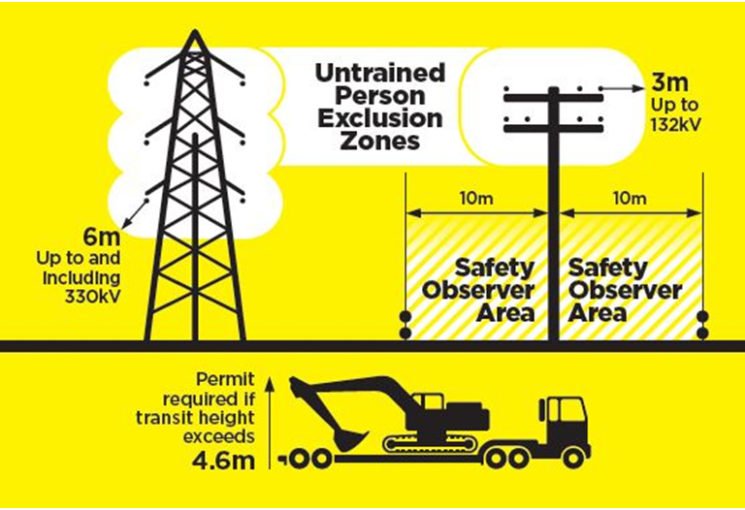The line separating safety from danger is sometimes quite small. To avoid crossing that line, we must 1) always be aware of the hazards around us; 2) understand the machines and operations in our work areas, and 3) take the time to think about the possible consequences that may result from where we place our bodies or the actions we perform. When we do this, we can avoid suddenly finding ourselves in the “line of fire.
In this article, we will discuss many workplace hazards and outlines general principles that can help employees prevent these hazards from causing serious injuries and deaths. Featured are several incidents that illustrate the consequences of not noticing when we are in harm’s way. Topics include hazards presented by gravity, moving machinery, flying debris and projectiles, automated equipment, moving vehicles, contact with stationary hazards, and the importance of observation and feedback.

SUDDEN RELEASE OF TENSION
A supervisor asked †roy Loadholt to cut off the bands that bound some pallets of work material. When †roy cut the first sharp metal band with some shears, it flew away with enough force to inflict a nasty cut to his elbow. He had no idea that the sudden release of tension could cause this to happen; he didn’t realize he had placed himself in the line of fire.
- The sudden release of tension can be hazardous.
- Tension is a specific type of stored energy and can be found in many forms, such as springs, chains, lifting straps, and tie-downs.
- Always position yourself out of harms way and be prepared for a sudden release of tension.
HAZARDS PRESENTED BY GRAVITY
At the end of his shift at the steel plant, Scott †ucker needed to advance a large water pipe down to the loading area so he could go home. Instead of waiting for the pipe hauler to return to the area, he decided to rock the pipe and kick out the chocks. He assumed the pipe would roll down the line so it could be loaded and that he could get out of the way when it started to roll. He realized too late that he had placed himself in the line of fire as he was unable to move out of the pipex path before it rolled over and crushed his leg.
- Gravity is another type of stored energy that must be considered a potential hazard.
- For example, a large roll-up door is held up by a spring and a few moving parts; any failure could cause it to come crashing down. Standing under it places you in the line of fire. Rather than pass under it, use a pedestrian door instead.
MOVING MACHINERY
- Moving machinery can present various dangers. When working around any type of moving machinery, it’s important to understand the movement and the actions of the machine.
- Do not hesitate to ask for assistance to be sure you understand the various hazards presented by the machinery in your work area.
- Many machine hazards can be controlled by guards, electric beams, pressure mats, and other safety devices, but do not depend on them for your protection.
- Often it is the combination of two mistakes that leads to an injury, such as the guard being removed, and a hand being placed near the turning gears of a machine.
- Remember, moving equipment has no brain, but you do. You must use it to avoid placing your body in the line of fire.
- Don’t be fooled by parts that aren’t moving; a machine can start up at any time unless it has been properly shut down and removed from service.
Even when you are controlling the action, having your fingers in the line of fire is an injury waiting to happen
Freddy Jones needed to use a crane to lift zone work materials. He was in a hurry and was trying to free the hook from another load so he could move the crane to his area. Freddy attempted to lower the hook with one hand while trying to free it with the other. When he hit the up button instead of the down, he discovered just how quickly a line of fire injury can occur as his finger wax caught and severed between the hook and the sling holding the load.
FLYING DEBRIS & PROJECTILES
- Another “line of fire hazard we must consider is flying debris. There are many operations we perform that create flying debris and projectiles.
- Before starting these types of operations, make sure to protect yourself by wearing the proper protective equipment and performing the task in a safe manner.
- As the operator, it is your responsibility to know where the debris is going and that no bystanders are in harms way.
- All workers should understand that projectiles can be thrown from these types of operations and that a safe distance must be maintained. Coming too close, especially without wearing proper protection, places you in the line of fire.
- If tools, parts, or other loose items are stored where they may fall into rotating equipment, they can become projectiles. Be aware of this hazard and keep it in mind when scanning your work area for potential hazards.
- For example, before using a drill press, take a quick look to make sure the key was not left in the chuck. Once the press gets up to speed, the key can fly out with great force.
OPENING CLOSING ENERGY CONTROL DEVICES
- Any time we open or close various types of energy control devices, such as an electrical disconnect or a valve in a pressurized system, there is a potential hazard that must be considered.
- When an energized electrical switch is opened or closed, there is the potential for some type of electrical arc flash to occur.
- This is why qualified electricians are trained to stand to the side when performing this function so they are not in the line of fire of an arc flash.
- Similarly, when opening valves that may be under pressure, also stand to the side so you are not exposed to a high- pressure release.
- Standing to the side when opening switches and valves is a good practice that can help keep us out of harms way.
AUTOMATED EQUIPMENT
- Understand that many machines and processes start automatically without regard for anyone who happens to be in the way.
- For example, air compressors start automatically when the pressure in the storage tank drops too far.
- Some types of crushers, bailers, and shredders start automatically when an object is detected by proximity sensors.
- There are countless types of automated and robotic systems used in various manufacturing operations.
- This is why we must be aware of the potential movements of the automated equipment in our workplaces and take precautions not to place ourselves in the path of travel.
MOVING VEHICLES
Lanny Powell was taking a shortcut through an area where heavy equipment was in operation. He knew pedestrians were not supposed to pass through this area, but he thought it would be okay just this once. Just as he got behind the tire of a large construction vehicle, the driver decided to back up and Lanny wax crushed to death. †he driver had no way to know Lanny wax behind him; Lanny placed himself directly in the line of fire.
- Similar incidents happen each year when workers are injured by forklifts, cranes, utility carts, and automobiles.
- Most equipment operators are taught that pedestrians have the right of way, but that only applies if the operator is aware of your presence.
- Pedestrians should treat these types of vehicles just like any other piece of unpredictable automated equipment and stay clear.
CONTACT WITH STATIONARY HAZARDS
- Avoiding the “line of fire usually means avoiding moving parts, but since we also move about the workplace, we must make sure that our motion doesn’t bring us into contact with a stationary hazard.
- Various items may be extremely cold or hot and inadvertent contact can cause injury.
- Unprotected contact with certain chemicals can cause various ailments.
- Contact with exposed live electrical parts can be fatal.
(Learn more: caught-between-hazards-one-of-constructions-fatal-four/ ).
OBSERVATION & FEEDBACK
- Some companies have formal programs of observation in which employees observe a job being performed, paying specific attention to any hazards or unsafe conditions that may result.
- It’s important to understand that these types of observations are aimed solely at uncovering potentially unsafe conditions and are not used to evaluate or discipline employees.
- No matter if you are the person observing or being observed, your best effort and participation are required if safety is to be improved.
- You dont have to have a formal program to take advantage of this type of observation and feedback.
- For example, anytime an experienced worker shares knowledge with a newer worker; whenever an employee makes a safety suggestion to a supervisor; each time a maintenance crew evaluates and discusses the safest way to perform a complex task, experience and observation are being used to improve safety and keep hazard awareness in the forefront.
(Read More: photo-of-the-day-what-is-the-line-of-fire/).




